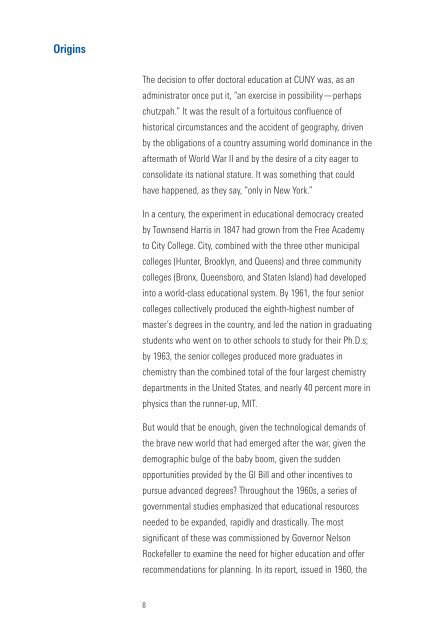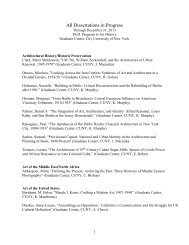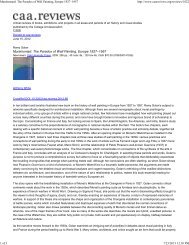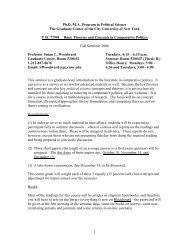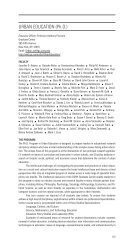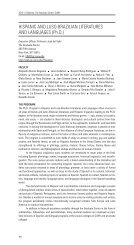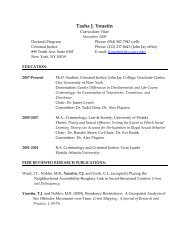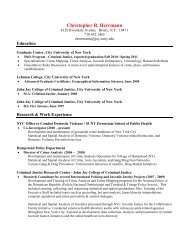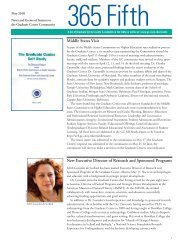Fifty Years at the Center Book - CUNY Graduate Center
Fifty Years at the Center Book - CUNY Graduate Center
Fifty Years at the Center Book - CUNY Graduate Center
You also want an ePaper? Increase the reach of your titles
YUMPU automatically turns print PDFs into web optimized ePapers that Google loves.
Origins<br />
The decision to offer doctoral educ<strong>at</strong>ion <strong>at</strong> <strong>CUNY</strong> was, as an<br />
administr<strong>at</strong>or once put it, “an exercise in possibility—perhaps<br />
chutzpah.” It was <strong>the</strong> result of a fortuitous confluence of<br />
historical circumstances and <strong>the</strong> accident of geography, driven<br />
by <strong>the</strong> oblig<strong>at</strong>ions of a country assuming world dominance in <strong>the</strong><br />
afterm<strong>at</strong>h of World War II and by <strong>the</strong> desire of a city eager to<br />
consolid<strong>at</strong>e its n<strong>at</strong>ional st<strong>at</strong>ure. It was something th<strong>at</strong> could<br />
have happened, as <strong>the</strong>y say, “only in New York.”<br />
In a century, <strong>the</strong> experiment in educ<strong>at</strong>ional democracy cre<strong>at</strong>ed<br />
by Townsend Harris in 1847 had grown from <strong>the</strong> Free Academy<br />
to City College. City, combined with <strong>the</strong> three o<strong>the</strong>r municipal<br />
colleges (Hunter, Brooklyn, and Queens) and three community<br />
colleges (Bronx, Queensboro, and St<strong>at</strong>en Island) had developed<br />
into a world-class educ<strong>at</strong>ional system. By 1961, <strong>the</strong> four senior<br />
colleges collectively produced <strong>the</strong> eighth-highest number of<br />
master’s degrees in <strong>the</strong> country, and led <strong>the</strong> n<strong>at</strong>ion in gradu<strong>at</strong>ing<br />
students who went on to o<strong>the</strong>r schools to study for <strong>the</strong>ir Ph.D.s;<br />
by 1963, <strong>the</strong> senior colleges produced more gradu<strong>at</strong>es in<br />
chemistry than <strong>the</strong> combined total of <strong>the</strong> four largest chemistry<br />
departments in <strong>the</strong> United St<strong>at</strong>es, and nearly 40 percent more in<br />
physics than <strong>the</strong> runner-up, MIT.<br />
But would th<strong>at</strong> be enough, given <strong>the</strong> technological demands of<br />
<strong>the</strong> brave new world th<strong>at</strong> had emerged after <strong>the</strong> war, given <strong>the</strong><br />
demographic bulge of <strong>the</strong> baby boom, given <strong>the</strong> sudden<br />
opportunities provided by <strong>the</strong> GI Bill and o<strong>the</strong>r incentives to<br />
pursue advanced degrees? Throughout <strong>the</strong> 1960s, a series of<br />
governmental studies emphasized th<strong>at</strong> educ<strong>at</strong>ional resources<br />
needed to be expanded, rapidly and drastically. The most<br />
significant of <strong>the</strong>se was commissioned by Governor Nelson<br />
Rockefeller to examine <strong>the</strong> need for higher educ<strong>at</strong>ion and offer<br />
recommend<strong>at</strong>ions for planning. In its report, issued in 1960, <strong>the</strong><br />
8


